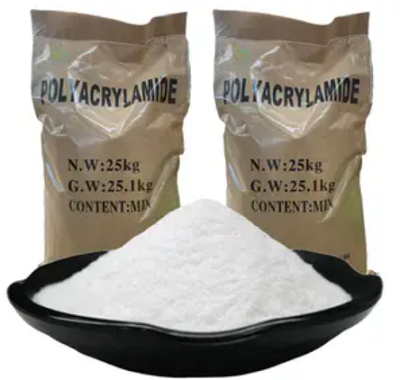
APAM Powder For Sewage Pretreatment
Brand Jiufang
Product origin Shenyang
Delivery time Lead time: 7days
Supply capacity 2000Metric Tons per Month
Every month our factory could produce 2000tons PAM polyacrylamide(powder anionic), include: sewage treatment PAM solid, sewage pretreatment APAM and sewage pretreatment APAM powder.
APAM for sewage pretreatment is a type of polymer with high molecular weight and high charge.
Download
In APAM for sewage pretreatment, anionic powder polyacrylamide plays an important role.
1.Principle of action Powder anionic is a kind of polymer, which functions in sewage treatment PAM solid in the following ways:
1) Electrical neutralization: The negative charge of sewage pretreatment APAM powder can electrically neutralize the positively charged particles in sewage, reducing the repulsive force between particles and thus promoting the aggregation of particles.
2) Adsorption bridging: The molecular chain of sewage treatment PAM solid can adsorb multiple particles, forming bridges between particles, connecting small particles into large flocs and accelerating precipitation.
2. Application advantages
1) Improving treatment efficiency: Powder anionic can quickly coagulate suspended solids, colloids and other impurities in sewage into larger flocs, facilitating subsequent separation and removal, greatly improving the efficiency of sewage pretreatment.
2) Strong adaptability: Sewage pretreatment APAM powder has good treatment effects for different types of sewage, such as domestic sewage and industrial wastewater. Sewage treatment PAM solid(powder anionic) can adapt to different water quality conditions, such as pH and temperature. 3) Low dosage: Only a small amount of powder anionic polyacrylamide needs to be added to achieve a good treatment effect, reducing the treatment cost.
3. Usage methods
1) Dissolution: Slowly add powder anionic polyacrylamide into water and stir evenly to fully dissolve sewage pretreatment APAM powder. Note that the dissolution speed should not be too fast to avoid caking.
2) Dosing: Determine the appropriate dosage according to the nature and treatment requirements of the sewage. Generally, the dissolved polyacrylamide solution is dosed into the sewage through equipment such as metering pumps.
3) Stirring: After dosing, appropriate stirring is required to fully mix the APAM for sewage pretreatment polyacrylamide with the sewage and promote the flocculation reaction.
4. Precautions
1) Storage conditions: Powder anionic polyacrylamide should be stored in a dry and ventilated place, avoiding direct sunlight and humid environment to avoid affecting the performance of sewage treatment PAM solid.
2) Safety protection: During use, appropriate protective equipment such as gloves and masks should be worn to avoid direct contact with the powder anionic and solution anionic.
3) Accurate measurement: Strictly control the dosage to avoid excessive or insufficient dosing. Excessive dosing may lead to an increase in sludge volume and an increase in treatment cost; insufficient dosing will not achieve the expected treatment effect.


Industry-specific attributes
| Name | Powder anionic polyacrylamide | |||
| Application | Powder anionic for wastewater treatment | |||
| CAS NO. | 9003-05-8 | |||
Other Attributes
| Appearance | White Powder anionic polyacrylamide | |||
| Solid Content | 90% | |||
| Molecular Weight 10*6 | 16 | |||
| Density(25℃) | 0.75g/cm3 | |||
| PH Value(1% water solution) | 6~8 | |||
| Anionic Charge | 30% | |||
| Dissolving Time,min | <30 | |||
| Storage Temperature,℃ | 0~35 | |||
| Shelf Life,month | 24 | |||
Supply Ability
| Supply Ability | 2000Metric Tons per Month | |||
Lead Time
| Quantity(kilograms) | 1~50 | >50 | |
| Lead Time(days) | 7 | negotiated | |














